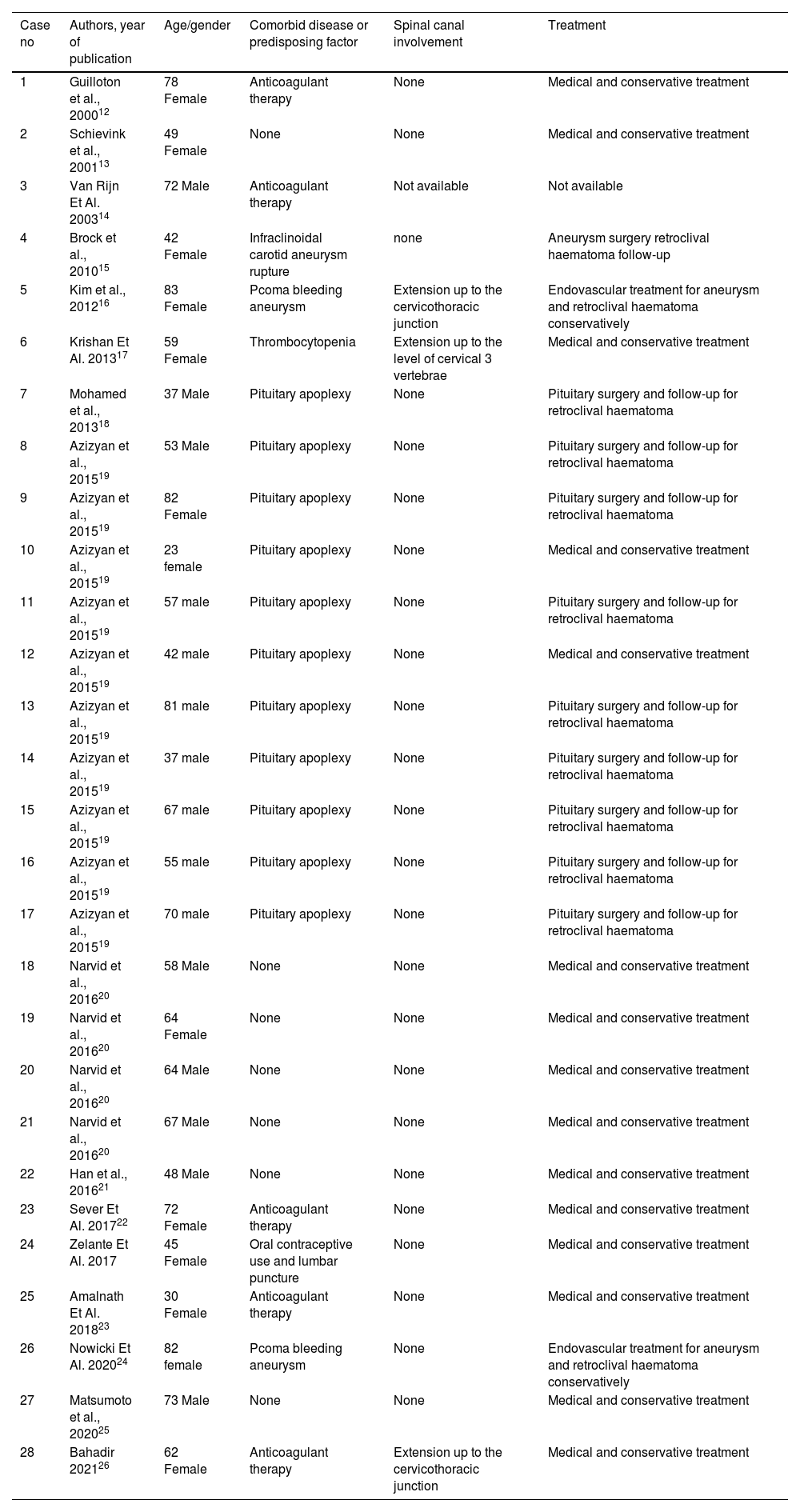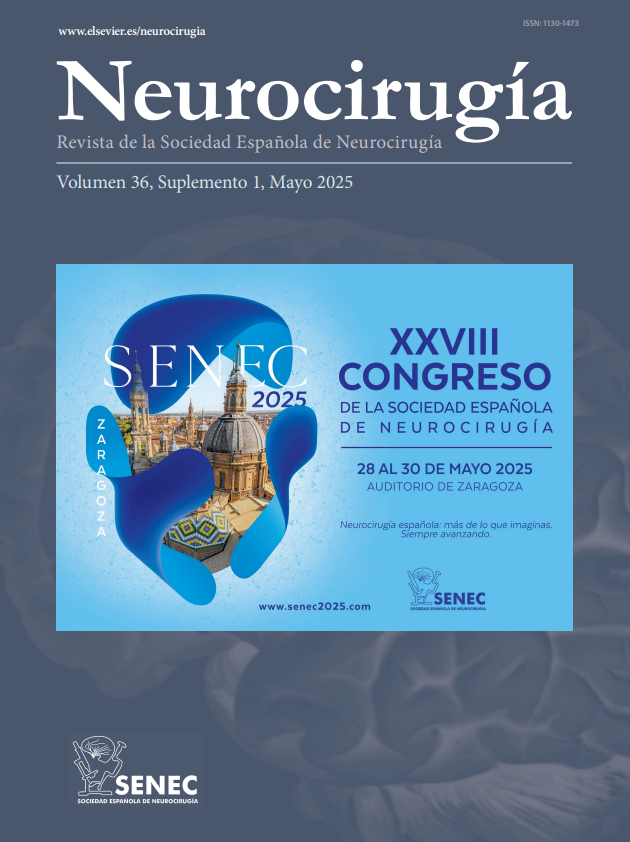Retroclival subdural haematomas (RSH) are a rare occurrence, accounting for 0.3% of acute extra-axial haematomas. Although typically associated with trauma, non-traumatic causes include coagulopathy, pituitary apoplexy and vascular anomalies.The presence of cases due to non-traumatic causes can present significant diagnostic challenges. This article aims to shed light on the intricacies of non-traumatic RSH by conducting a review of the literature and presenting a case study of a 74-year-old woman on anticoagulants. The primary objective is to enhance our understanding of the diagnosis and treatment of this condition, emphasising the significance of bleeding in a location that often goes unnoticed, particularly in Computed Tomography (CT) scans, with the exception of trauma. A comprehensive review of the literature revealed 28 cases of non-traumatic RSH in adults. A detailed analysis was conducted on the demographic characteristics, causes, presentations and outcomes of these cases.The mean patient age was found to be 59 years, with a slight male predominance of 57.57%. The primary causes were identified as pituitary apoplexy (39.28%) and anticoagulants (21.42%), while 25% of cases had an unknown aetiology. Spinal canal extension occurred in 10.71% of cases, which increased morbidity.The recovery rate was 92.85% and the mortality rate was 3.57%.Non-traumatic RSH is under-recognised and often missed on standard imaging.Conservative treatment is effective without spinal cord compression.Awareness is very important, especially for diagnosis and treatment.
Los hematomas subdurales retroclivales (HSR) son poco frecuentes y representan el 0,3 % de los hematomas extraaxiales agudos. Aunque suelen estar asociados a traumatismos, entre las causas no traumáticas se incluyen la coagulopatía, la apoplejía hipofisaria y las anomalías vasculares. Este artículo pretende arrojar luz sobre los entresijos de la HSR no traumática mediante una revisión de la literatura y la presentación de un estudio de caso de una mujer de 74 años en tratamiento con anticoagulantes. El objetivo principal es mejorar nuestra comprensión del diagnóstico y el tratamiento de esta afección, haciendo hincapié en la importancia de la hemorragia en una localización que a menudo pasa desapercibida, sobre todo en las tomografías computarizadas (TC), a excepción de los traumatismos. Una revisión exhaustiva de la literatura reveló 28 casos de HSR no traumática en adultos. Se realizó un análisis detallado de las características demográficas, las causas, las formas de presentación y los resultados de estos casos. La edad media de los pacientes fue de 59 años, con un ligero predominio masculino del 57,57%. Las causas primarias fueron la apoplejía hipofisaria (39,28%) y los anticoagulantes (21,42 %), mientras que en el 25% de los casos se desconocía la etiología. La extensión del canal espinal se produjo en el 10,71% de los casos, lo que aumentó la morbilidad. La tasa de recuperación fue del 92,85%, y la tasa de mortalidad del 3,57 %. La HSR no traumática está subestimada y con frecuencia no se detecta en el diagnóstico por imagen estándar.El tratamiento conservador es eficaz sin compresión de la médula espinal.La concienciación es primordial, especialmente para el diagnóstico y el tratamiento.
Article

If it is the first time you have accessed you can obtain your credentials by contacting Elsevier Spain in suscripciones@elsevier.com or by calling our Customer Service at902 88 87 40 if you are calling from Spain or at +34 932 418 800 (from 9 to 18h., GMT + 1) if you are calling outside of Spain.
If you already have your login data, please click here .
If you have forgotten your password you can you can recover it by clicking here and selecting the option ¿I have forgotten my password¿.











